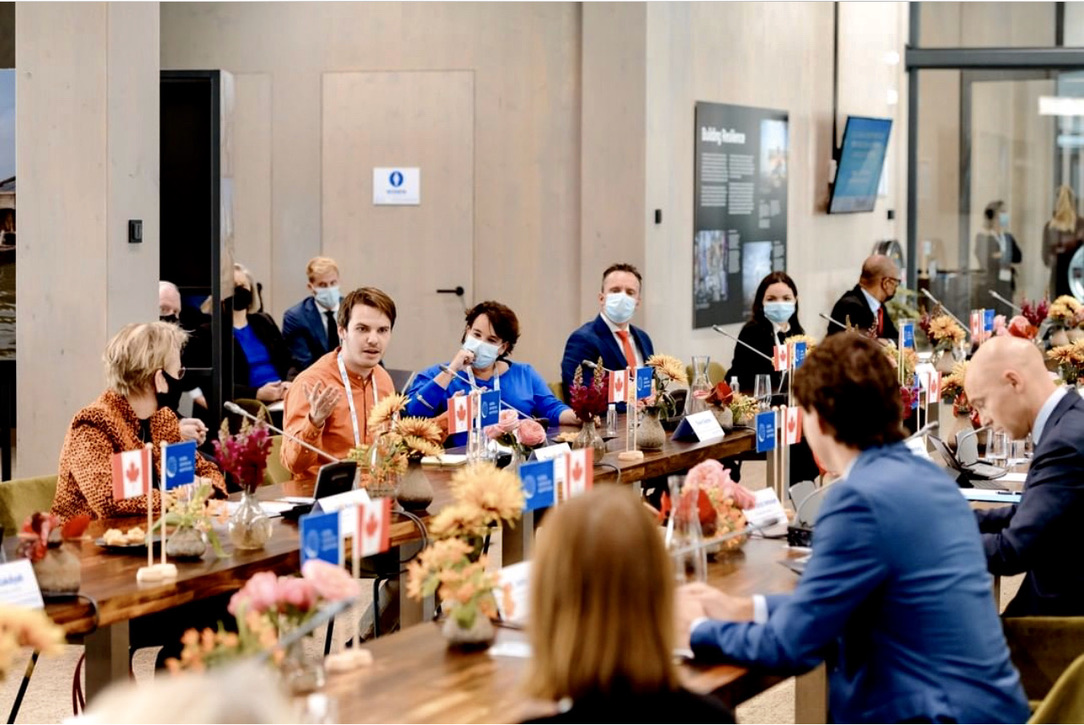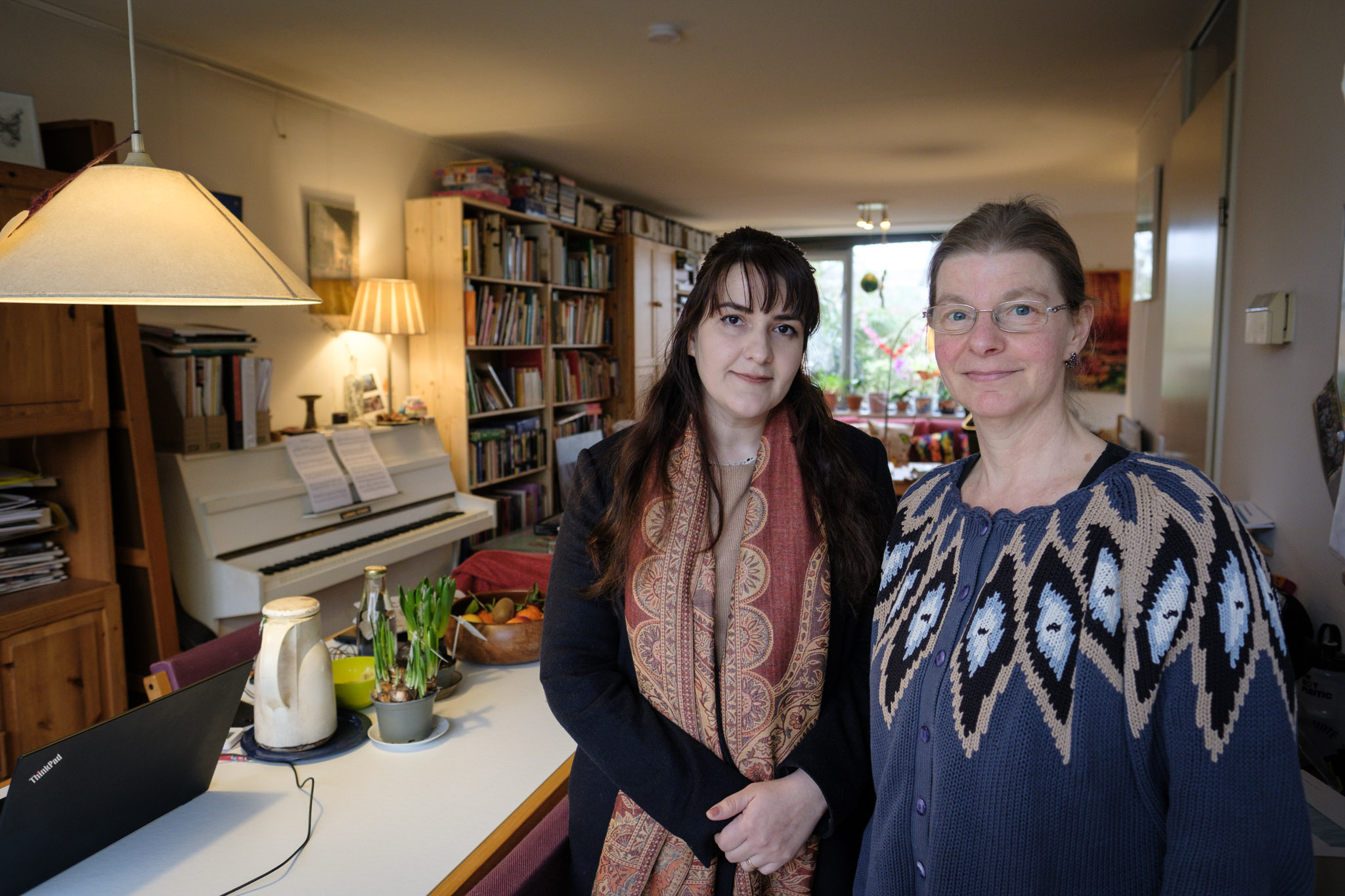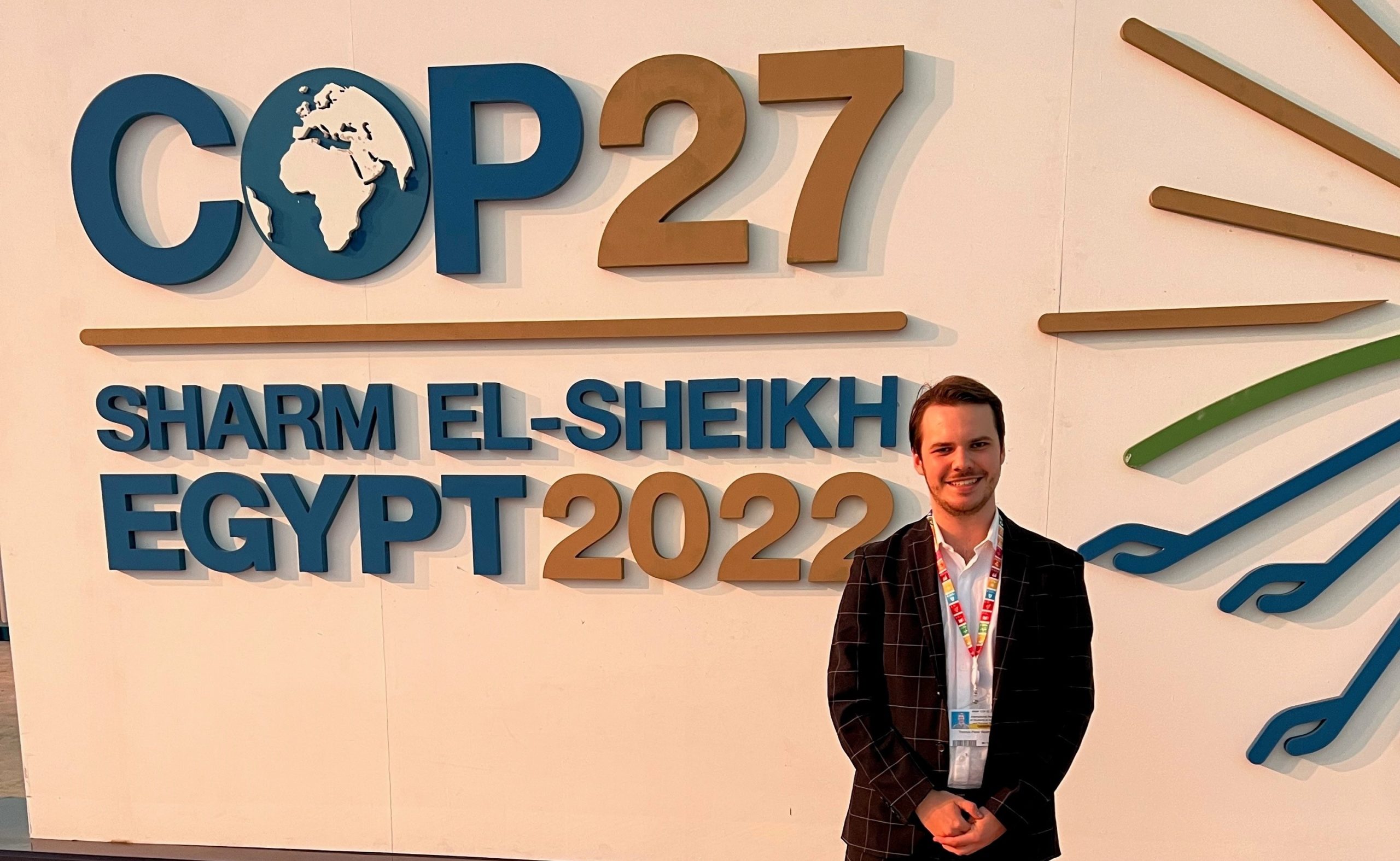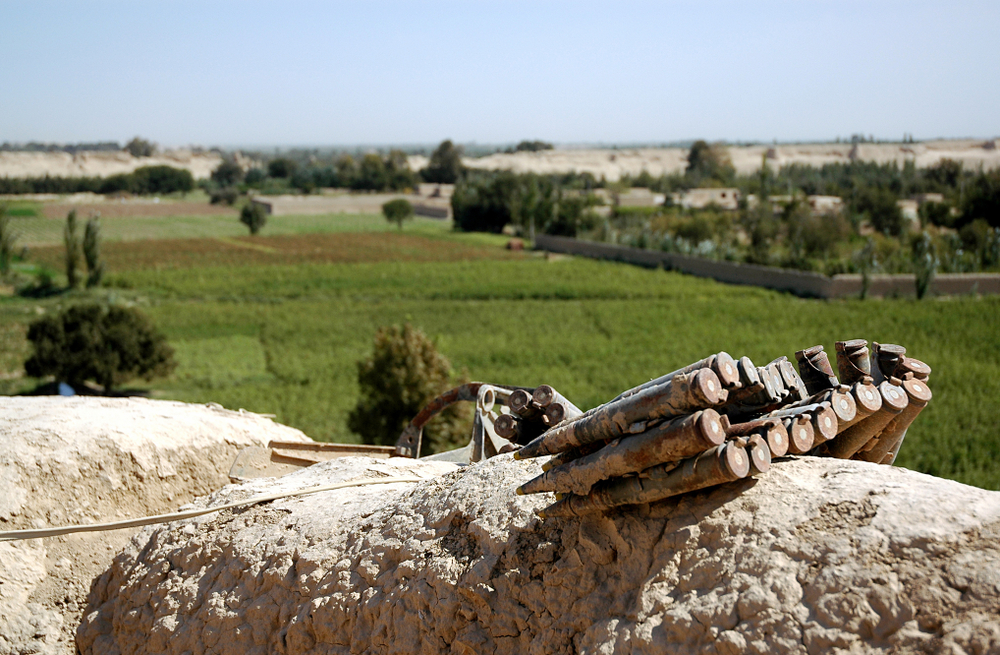It was his first climate conference and it wasn’t all he hoped for. Wageningen student Thomas Westhoff attended COP26 in Glasgow to give young people a voice. It was a roller-coaster of networking and lobbying. Resource also spoke to WUR staff who gave presentations in seminars at the summit.
Westhoff was one of 200 representatives of youth organizations, and travelled to Glasgow to make sure young people would be involved in making climate policy. ‘It is overwhelming, you’ve got to be well-organized to have an impact. I was networking all the time with companies and other organizations to put forward our points, but world leaders and negotiators spent a lot of time behind closed doors. Sometimes only two of the 200 youth representatives were allowed into those meetings. So we didn’t have as much influence as I had hoped beforehand.’
Climate adaptation
Westhoff was at the Climate Conference in Glasgow for over a week. He is doing two Master’s degrees in Wageningen: Climate Studies and International Land & Water Management. But he was in Glasgow as the External Relations vice president of the International Association of Students in Agriculture and Related Sciences (IAAS), which has members at about 100 agricultural universities in more than 50 countries, including Afghanistan, Indonesia, Ecuador and the Netherlands.
Westhoff was among the 200 representatives of youth organizations. Speaking from the conference, he said: ‘We have drawn up a joint declaration saying that policymakers and politicians should involve young people more in climate policy because we have good ideas that do not get considered at present. Young farmers, for example, have interesting ideas about climate adaptation, but they often lack access to investors or to land. That restricts the scope for implementing new, smart climate measures. We are now busy lobbying with other associations to get our youth paragraph into the final declaration.’
Zoo
The conference was a bit of a zoo, Westhoff thought. ‘I came across Bill Gates, for example, and Greta Thunberg and Mark Rutte – you see all the world pass by and that is fun. The conference was also a kind of fair. Lots of countries had nicely decorated pavilions, where they gave presentations, many of which were nice and informative. At one of them, I saw Ursula von der Leyen, the President of the European Commission, announcing a development fund. The pavilions were mainly for PR purposes, and the decisions were taken at the negotiating tables.’
We saw Prince Charles in conversation with Jonathan Ive, the designer of the iPhone
‘I had my photo taken with Prince Charles as well. It happened like this: we were walking in a park with other delegation members when we saw a museum that we could get into with our passes. In the central hall, we saw Prince Charles in conversation with Jonathan Ive, the designer of the iPhone. We had accidentally walked into a high-level meeting. We were allowed to take a selfie with them.’
Margins
Westhoff is enthusiastic about some of the decisions take at the COP26, such as the decision by major countries to end deforestation and stop investing in fossil energy. ‘And for the first time, India has set specific climate targets. That agreement by India has an impact: it brought calculations of global heating down to just under 2 degrees Celsius – on paper, at least.’
For the first time, India has set specific climate targets. That agreement has an impact
In the margins of the conference, Westhoff also talked to people from Bayer, which Monsanto is now part of, about collaboration and how to campaign effectively at a climate conference of this sort. ‘Bayer is the sponsor of IAAS. Bayer is a sensitive subject in Wageningen, but I see a lot of scope for learning from each other. One inspiring figure I met was an ex-MP for the Greens in Germany, who now leads Bayer’s sustainability agenda and gave me an interesting peek behind the scenes.’
Westhoff also talked to the Canadian prime minister Justin Trudeau at a meeting of the Global Centre on Adaptation in Rotterdam, just before the COP26 in Glasgow started. ‘There I expressed IAAS’s position on climate adaptation and I hope that I was able to influence his standpoint at the climate conference in Glasgow.’
Negotiation table
So, what is IAAS’s position? ‘First of all, we argue that it’s important to involve young people more in climate adaptation. Access to investors, good education and a seat at the negotiating table are important factors in this. Secondly, we try to get the agro-ecological approach on the agenda, and we think that this approach should also have a place in the action plan.
IAAS is a global organization so it can be difficult to arrive at common action plans
And thirdly, we argue for reducing meat consumption in western countries. IAAS is a global organization so it can be difficult to arrive at common action plans, because food is part of cultures: our members from developing countries don’t always agree with a statement such as that “we” should eat less meat. In that sense, our association is a microcosm of the conference. It is always important to genuinely exchange views and to be understanding towards each other.’
Fortunately, there was time for other things in the evenings. ‘The great thing was that we had free accommodation, staying with Scottish students. The Scots are very friendly and every evening we ended up in the pub. I tasted a lot of different whiskies, and I had some great discussions about peat. Just like a number of Scottish students, I’m doing research on peatland areas.’
WUR active in seminars
How do you monitor whether illegal deforestation doesn’t just continue, how do digital climate recommendations work, what might the Netherlands look like in 2120, and what can you do about the increasing amount of salt water on agricultural land? Resource produced a series during COP26, featuring WUR experts on key topics.
Monitoring forests
Many countries, including the Netherlands, Brazil, Indonesia and Russia, agreed at the Climate Conference in Glasgow to stop deforestation by 2030. But how do you monitor that agreement and make sure that the often illegal deforestation and greenhouse gas emissions don’t just continue? Transparent monitoring of land use should give us a clear picture of the situation.
Martin Herold and Niki De Sy of the Geo-information Science and Remote Sensing chair group led a seminar on transparent monitoring at COP26. The term covers methods of combining diverse datasets (including measurements and satellite images) with portals that show global land use and track it in real time.
Transparent monitoring can help countries, NGOs and indigenous communities with detecting and solving potential conflicts about land, or discrepancies between datasets. It can also support governments in getting a fuller picture of the CO2 emissions caused by land use, and in evaluating possible mitigation measures better, says De Sy.
Digital climate advisory services
WUR and some of its partners organized an event about digital climate advisory services (DCAS) for small-scale farmers in developing countries. DCAS observe and forecast the weather for the coming week, month or year. They add information about crop and livestock farming, and advise farmers on things like the best time to sow, spray pesticides, and harvest. Digital advisory services also offer predictions on climate change and what it means for things like choice of crops and water use.
DCAS are used in another project WUR is involved in, Digital Agri Hub ‘A lot of organizations work on climate data and services,’ says WUR researcher Tomaso Ceccarelli, who is involved in Digital Agri Hub. ‘The Hub links up all these organizations and provides a good overview of what is available. That is valuable information for investors, governments and, ultimately, farmers.’ The Hub evaluates and categorizes not just climate recommendations, but also recommendations on things like supply chain management and microfinancing.
The green Netherlands of 2120
At the end of 2019, WUR made a map of the Netherlands in 2120: a future scenario of what our country could look like in 100 years, with nature, climate adaptation and the sustainable use of natural resources in pride of place. Tim van Hattum, who leads the Climate programme at WUR, presented this map and the starting points and ideas behind it at the COP.
In this picture of the Dutch landscape of the future, the amount of forest has doubled, the most fertile land is used for – mainly plant-based – food production, and agriculture is almost completely circular. The coast has been adapted to the rising sea levels and the rivers have been given more room. There are large wind and solar farms in the North Sea.
The memorandum ‘A natural future for the Netherlands in 2120’ is therefore a visualization of one possible future scenario in which the Netherlands adapts to climate change and stops building in parts of the country that are below sea level.
Saline agriculture
Climate change is causing an increase in the amount of salt water on agricultural land, reducing food security as the supply of fresh water goes down. Judith Snethlage, a researcher at Wageningen Environmental Research, works on the topic of salinization. She prepared a session on saline agriculture at the COP26, in collaboration with the Dutch government, world food organization FAO, and VU University Amsterdam. The focus was on Bangladesh, where salinization is increasing, not just because of rising sea levels, but also because global warming is causing more water to evaporate, leaving more salt in the soils. WUR is doing research in Bangladesh on how the country can deal with that. The researchers are looking at which measures work, so that evidence-based solutions can be offered to policymakers.
Snethlage: ‘We use the Food Systems Approach for this. With that method we can weigh up the factors and considerations that affect the entire food system. For instance, you can find out what the impact of salinization is on livestock. Livestock animals don’t drink salt water, but if you could grow salt-resistant grasses that the cows could eat, that’s solutions-oriented thinking.’

 Thomas Westhoff at the negotiating table with Canadian prime minister Justin Trudeau, among others.
Thomas Westhoff at the negotiating table with Canadian prime minister Justin Trudeau, among others. 

